Title of the work
Country of the First Edition
Country/countries of popularity
Original Language
First Edition Date
First Edition Details
Natalia Olbińska, Atlantyda. Przewodnik po mieście. Bielsko-Biała: Typoforge Studio, 2017, 43 pp.
ISBN
Genre
Guidebook
Illustrated works
Picture books
Target Audience
Crossover
Cover
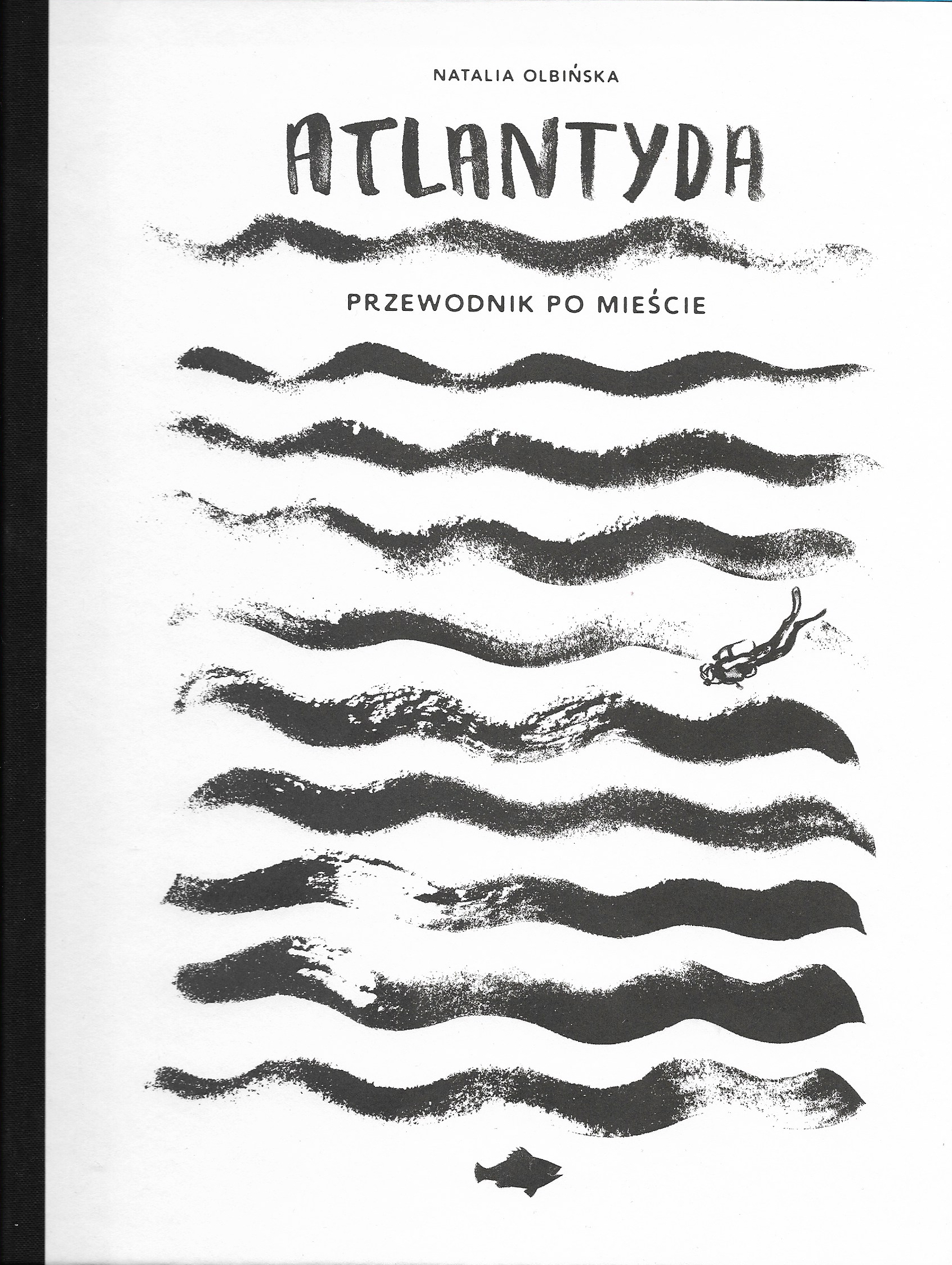
Courtesy of the author and the publisher.
Author of the Entry:
Krzysztof Rybak, University of Warsaw, rybak.km@gmail.com
Peer-reviewer of the Entry:
Elżbieta Olechowska, University of Warsaw, elzbieta.olechowska@gmail.com
Susan Deacy, University of Roehampton, s.deacy@roehampton.ac.uk
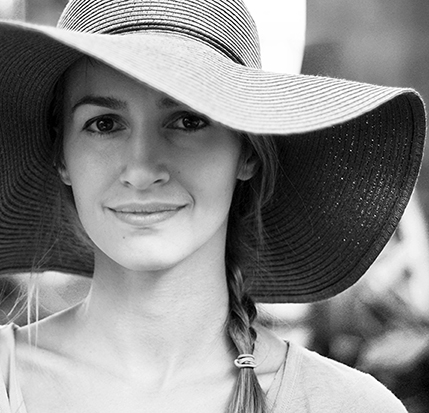
Portrait by Ignacy Frederik Heringa, courtesy of the author.
Natalia Olbińska
, b. 1988
(Artist)
Natalia Olbińska was born in 1988 in New York and has lived in Warsaw since 2011. She studied at the Schools of Design of the Carnegie Mellon University at Pittsburg and at the Faculty of Design and the Faculty of Graphic Arts of the Academy of Fine Arts in Warsaw. She was an art director and graphic designer of the Polish magazine „La Rivista” (2012–2015), currently she is the art director of another magazine Lente. She has received many awards and her posters for L’Association du cinéma indépendant pour sa diffusion (ACID) were presented during the Cannes Film Festival. Atlantyda. Przewodnik po mieście [Atlantis. A City Guide] is her diploma work submitted at the Faculty of Graphic Arts of the Academy of Fine Arts in Warsaw under the supervision of prof. Błażej Ostoja Lniski. For more information, see her website (accessed: June 26, 2018).
Bio prepared by Krzysztof Rybak, University of Warsaw, rybak.km@gmail.com
Questionnaire
1. What drew you to working with Classical Antiquity and what challenges did you face in selecting, representing, or adapting particular myths or stories?
Since childhood I have been fascinated by Ancient Greek mythology, and in recent years have delved much deeper into history of Classical Antiquity partly because I am co-founder and art director for Lente Magazine, which focuses on the culture and history of the Mediterranean region (prior to this I worked for La Rivista magazine devoted to Italian culture and history). Being involved creatively in these magazines sparked in me a great interest and passion! Classical mythology, I have to add, has also been a recurring theme in assignments in the illustration department at the Academy of Fine Art in Warsaw.
What was challenging in illustrating and writing the guide to Atlantis was how to avoid clichés as well as similarities with earlier representations – there have been many. There are so many details of everyday life that I wanted to cover in this book, so narrowing down the selection as well as not over-complicating the material for young readers was also difficult.
2. Why do you think classical / ancient myths, history, and literature continue to resonate with young audiences?
Ancient myths will always resonate with younger audiences as well as older ones, and will always be relevant. They have been part of our cultural fabric for thousands of years. C.S. Lewis puts it best: “The value of myth is that it takes all the things you know and restores to them the rich significance which has been hidden by the veil of familiarity.”
3. Do you have a background in classical education (Latin or Greek at school or classes at the University?) What sources are you using? Scholarly work? Wikipedia? Are there any books that made an impact on you in this respect?
I don't have a background in classical education, unfortunately, I wish I did!
With this book I wanted to straddle the fantastical with the historical, and turned to many sources for information, starting first of all with the original source materials – Plato's Timaeus and Critias where Atlantis is described. I also looked through museum catalogues (particularly in regard to the sculptures I described), Wikipedia and other internet resources, as well as documentary films.
4. Did you think about how Classical Antiquity would translate for young readers, esp. in Poland?
I was educated in the United States, and am unaware of what the school curriculum covers here in Poland. But in my own experience, Classical Antiquity was touched upon very briefly, which is a great pity. Young Polish readers do have such a rich amount of beautifully illustrated and informative literature available to them – this is a good sign!
5. How concerned were you with "accuracy" or "fidelity" to the original?
It was important for me to have fantasy inspired by history. The ancestors of the elephant seals in the Atlantis guide, for example, were the North African elephants who escaped the Punic Wars. Among our options for public transport not only do we see ancient triremes but mythological hippocampus-driven chariots. The Riace bronzes, discovered in the Mediterranean Sea in the 1970's, return to the depths of Atlantis for vacation every year.
6. Are you planning any further forays into classical material?
Of course, many in fact! I plan for this particular book to be the beginning of a series of guides to non-existing cities, whether mythical or historical. The next one will be about Carthage. Apart from this, along with the Editor-in-Chief of Lente Magazine, Julia Wollner, we have several publishing ventures in the pipeline.
Prepared by Krzysztof Rybak, University of Warsaw, rybak.km@gmail.com
Summary
The book is a fictional guide to the underwater city of Atlantis. Beginning with the description of the town itself, the author tells us how to get there, which places are worth visiting (Poseidon’s temple, Guggenheim Museum, public beaches, the financial centre, ancient aqueducts, etc.), and provides a good deal of practical information (including how to travel within Atlantis, where to sleep, eat, and drink). The text is accompanied by the author’s black and white illustrations. In addition, the reader may recognize such pieces of art as Artemision Bronze, the Aphrodite of Knidos, Riace bronzes, or Myron’s Discobolus.
Analysis
A contemporary view of the ancient, mythical city of Atlantis, presented as a touristic sea resort, where classical and contemporary elements coexist because, as one may read, the city was opened to tourists in 2016. Both in the text and the illustrations, the author refers to classical sources. Plato’s Timaeus and Critias (classical sources for the Atlantis myth) are mentioned. The other classical elements are the Punic Wars, Greek ships (triremes), and pieces of art (Artemision Bronze, Aphrodite of Knidos, Riace bronzes, Myron’s Discobolus), mythical sea creatures (Hippocamp, the Sirens), and a god (Poseidon).
Many of these are not only mentioned in the text but also depicted by the author. All the illustrations are black and white and look like they were painted with a broad brush – the strokes are irregular, similar to the waves. Lack of colours may signal that the book would not be well received by young readers (as the colourful pictures may seem more interesting), but this effect summons old figures and graphics from the art history catalogues or archeological publications.
The author mixes ancient sources, both Greek (Plato’s Timaeus and Critias, Heraclitus of Ephesus’ – and Atlantis motto – pantha rhei) and biblical (Jonah and the whale), not only with contemporary language and discoveries, such as underwater parking and family submarines but also with traditional Polish motifs. One of them is the Mermaid of Warsaw (Warszawska Syrenka), a legendary creature presented on the city’s coat of arms as she protects Warsaw and its residents.
Besides mythological motifs and a play with the guidebook literary convention, Atlantyda also contains an ecological message. According to the guide, the people of Atlantis do not eat fish and are vegetarian due to ethical reasons. However, meat-eaters are invited to taste a fine local dish, seagull. Although, lately preparing it is more difficult due to the seas' pollution and the marine litter eaten by birds.
Further Reading
Beauvais, Clémentine, The Mighty Child: Time and power in children's literature, Amsterdam, Philadelphia: John Benjamins Publishing Company, 2009 (section "Going on a guilt-trip: Ecological children's literature").
O’Connell, Eithne "Ecocriticism, ecopedagogy and the life and works of Beatrix Potter", in Politics and Ideology in Children’s Literature, Marian Thérèse Keyes, Áine McGillicuddy, eds., Dublin: Four Courts Press, 2014, 31–44.
Addenda
Illustrations from Atlantyda, courtesy of the author:
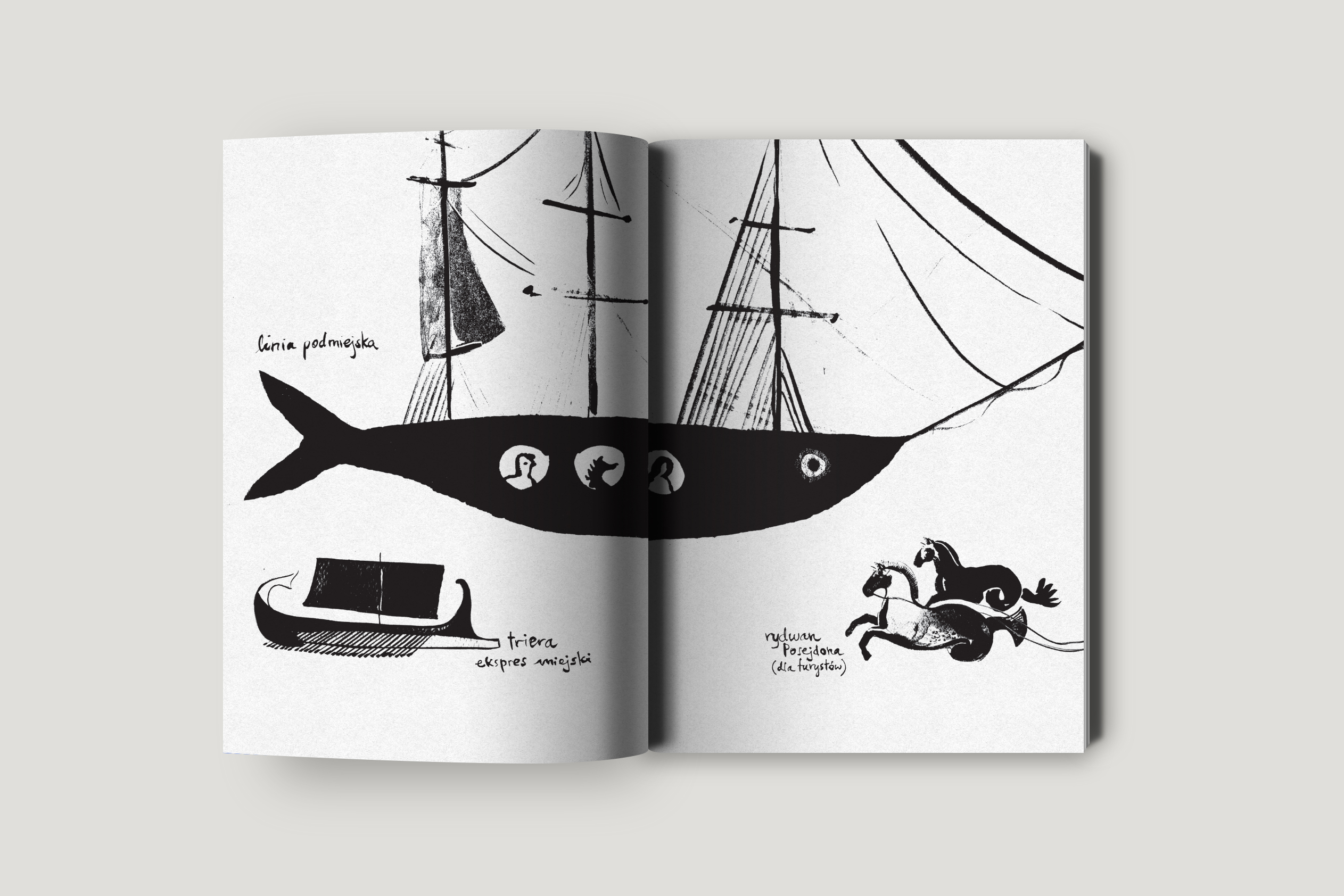
Greek ships (triremes)
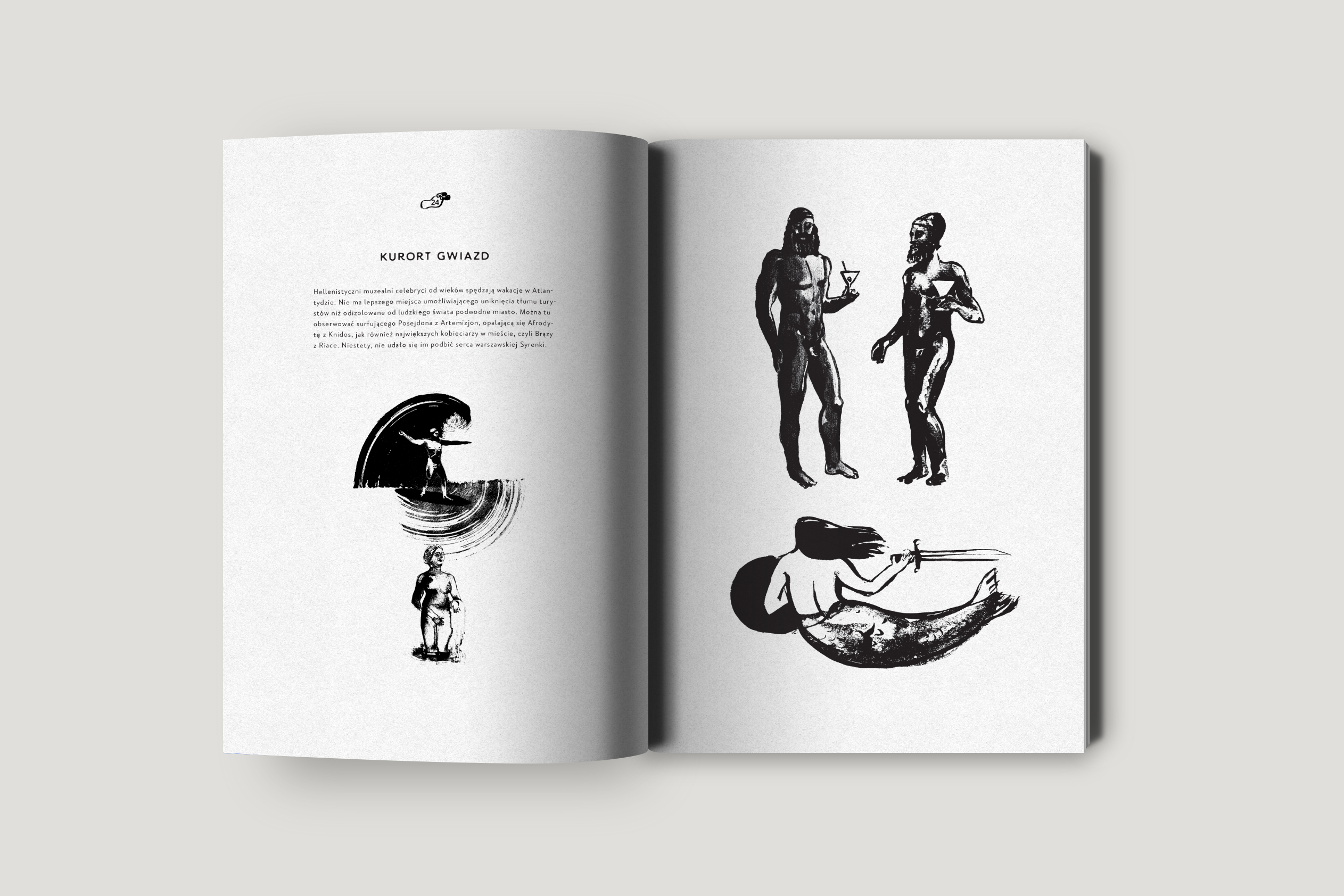
Artemision Bronze, Aphrodite of Knidos, Riace bronzes, and the mermaid of Warsaw
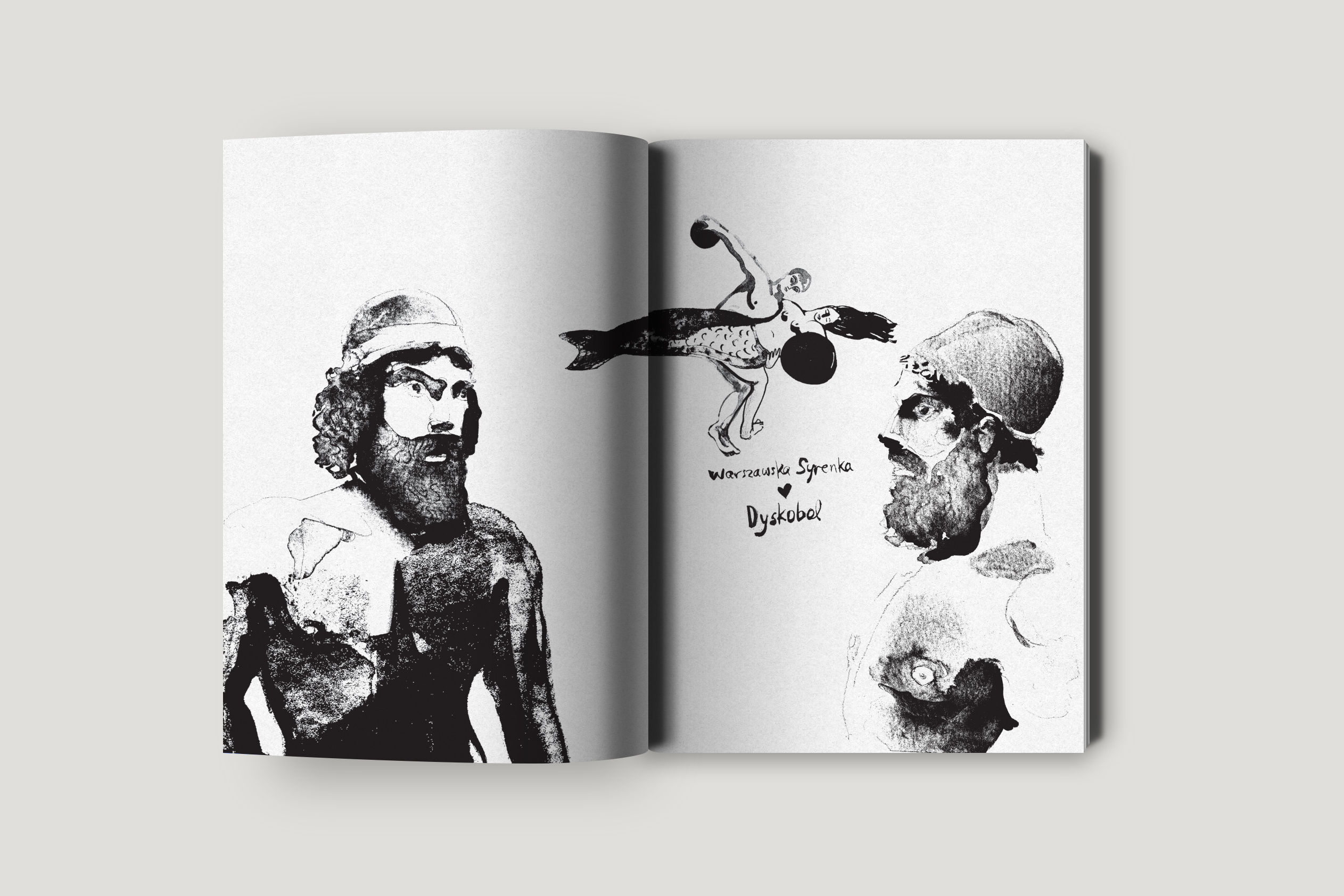
Myron’s Discobolus, the mermaid of Warsaw and Riace bronzes
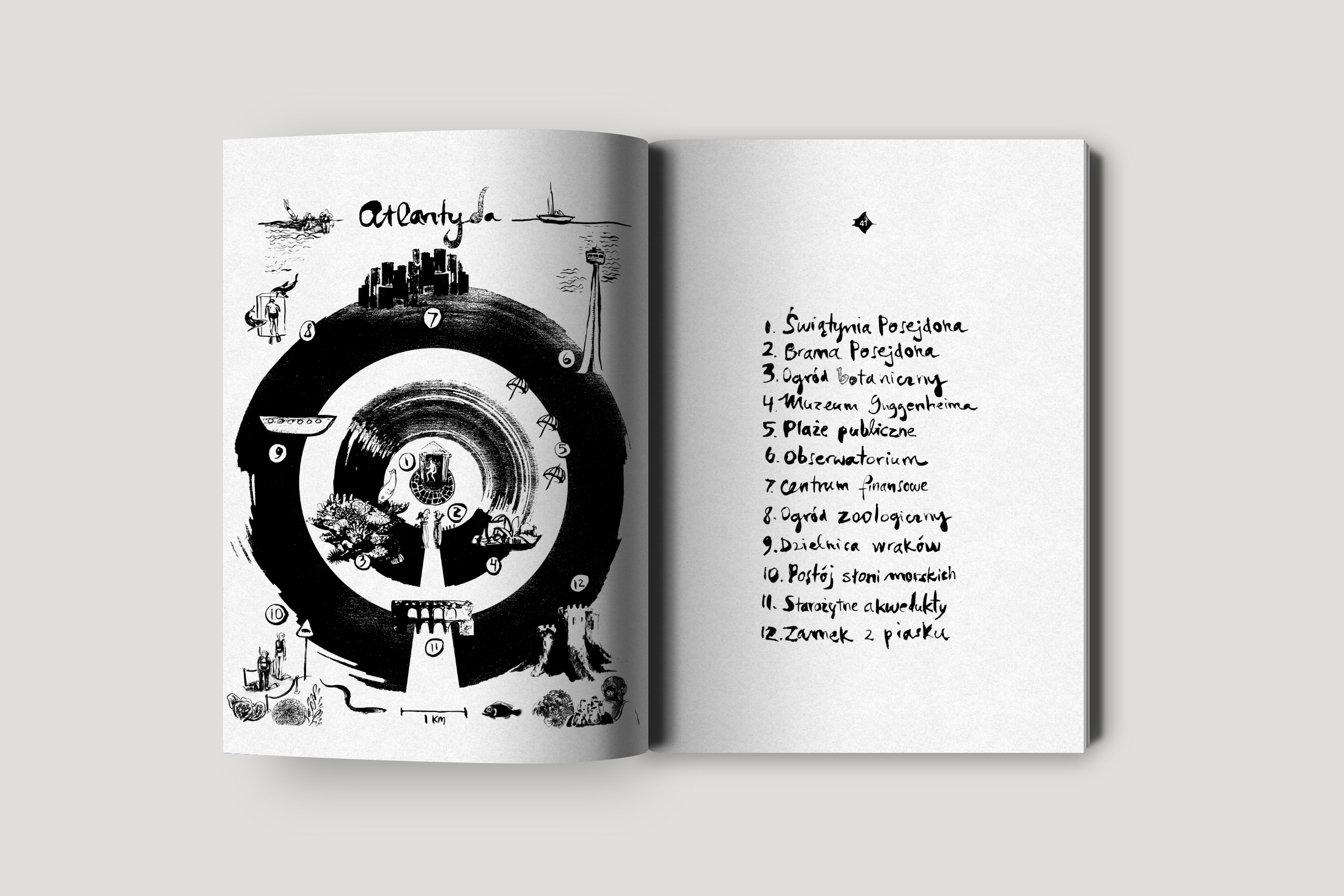
Map of the city Atlantis, including Poseidon’s Temple (1), Poseidon’s Gate (2), and ancient aqueducts (11).


